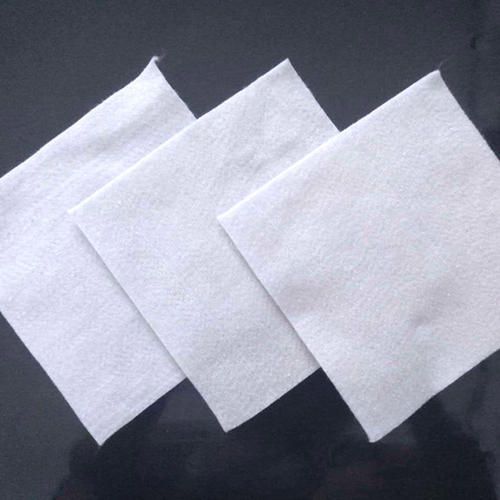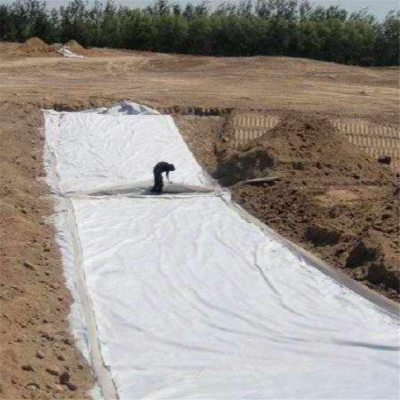There are several construction steps and precautions for geotextile rolls before installation and deployment, and the first step is to avoid damage. Geotextile rolls should be stacked in a flat and water free area, with a height not exceeding four rolls, and the identification tags of the rolls should be visible. Geotextile rolls must be covered with opaque materials to prevent UV aging. During storage, it is important to maintain the integrity of the labels and data. During the transportation process of geotextile (including on-site transportation from material storage to work site), geotextile rolls must be protected from damage.
Geotextile rolls that have been physically damaged must be repaired. Geotextiles that have suffered severe wear and tear cannot be used. Any geotextile that comes into contact with leaked chemical reagents is not allowed to be used in this project.

2. Laying method of geotextile: manual rolling laying; The fabric surface should be flat and leave appropriate deformation allowance. The installation of long or short fiber geotextiles usually involves several methods such as overlapping, sewing, and welding. The width of stitching and welding is generally above 0.1m, and the overlap width is generally above 0.2M. Geotextiles that may be exposed for a long time should be welded or sewn.
Stitching of geotextile: All stitching must be done continuously (for example, spot stitching is not allowed). Before overlapping, the geotextile must overlap by at least 150mm. The price of anti-seepage geotextile is small, and the distance between the sewing needle and the woven edge (the exposed edge of the material) should be at least 25mm. The seam of the sewn geotextile includes a single line of interlocking chain seam method. The thread used for stitching should be made of resin material with a small tension exceeding 60N, and have chemical corrosion resistance and UV resistance equivalent to or exceeding that of geotextile. Any ‘missing needle’ on the sewn geotextile must be re sewn in the affected area. Corresponding measures must be taken to prevent soil, particulate matter, or foreign substances from entering the geotextile layer after installation. The overlapping of fabrics can be divided into natural overlapping, seam joining, or welding according to the terrain and usage function.

Construction precautions: After construction, all geotextile sheets and joints must be inspected. Defective geotextile sheets and seams must be clearly marked on the geotextile and repaired. It is necessary to repair worn geotextile by laying and heat connecting small pieces of geotextile film, which should be at least 200mm longer than the edge of the defect in all directions.
The hot connection must be strictly controlled to ensure that the geotextile patch is tightly bonded to the geotextile and does not damage the geotextile. Before the end of each day’s laying, visually inspect the surface of all geotextiles laid that day to ensure that all damaged areas have been marked and repaired immediately. Confirm that there are no foreign substances on the laid surface that may cause damage, such as fine needles, small iron nails, etc. At the bottom of the landfill site, if the crack in the geotextile exceeds 10% of the width of the roll, the damaged part must be cut off and the two geotextiles connected; If the crack on the slope exceeds 10% of the width of the roll, the geotextile roll must be removed and replaced with a new roll.
Post time: May-19-2025

